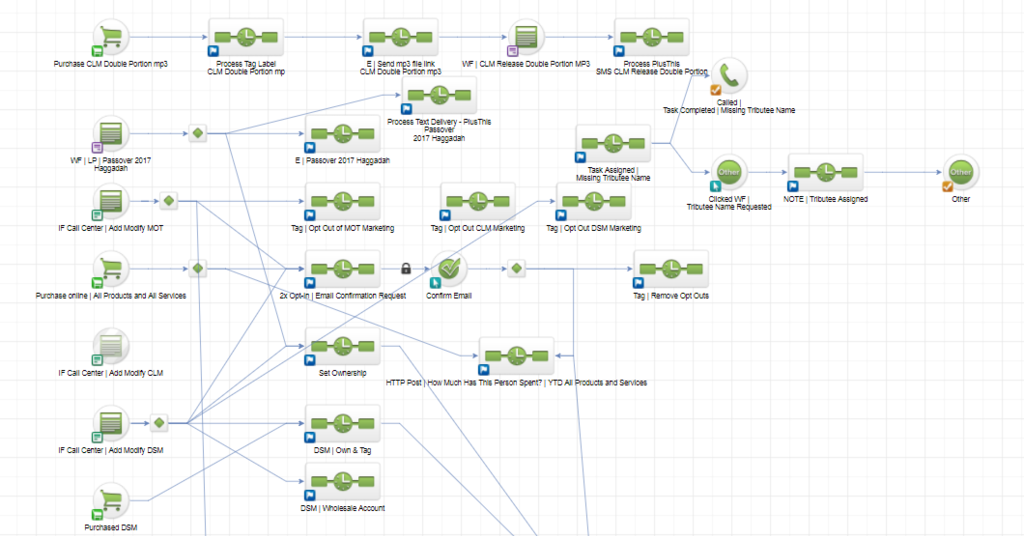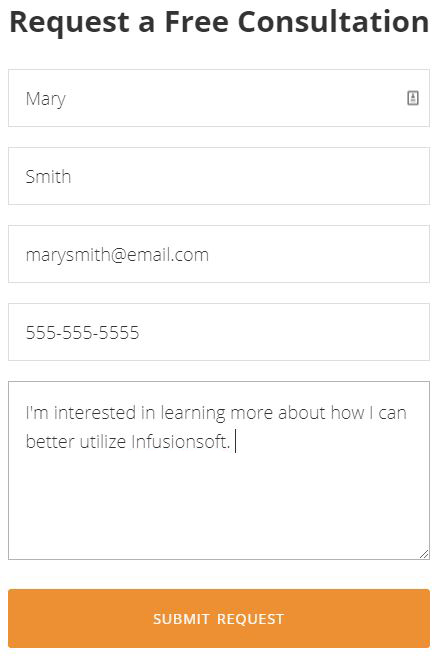
Viral Solutions Terminology
STRATEGIZE
EXECUTE
GROW
A list of words, phrases, and expressions frequently used at Viral Solutions
Above the fold – The top portion of a web page that’s visible without scrolling. Think of the front-page story on a newspaper…if you still read newspapers, that is.
Analytics – The discovery, interpretation, communication, and eventual application of patterns in data. Remember—there’s no sense in having data if you don’t do anything with it!
Automation – Using computer programs to perform repetitive tasks normally handled by a person. Just imagine all the time you’d save automating your email campaigns… You could finally tackle all those chores you’ve been putting off!
Avatar – Also referred to as buyer persona, an avatar is a representation of one’s ideal customer. No, not the movie…although if your ideal customer is a human-alien hybrid from Pandora, you should market accordingly.
Black hat – Slang for an unethical digital marketer who uses spammy tactics to rank websites, such as article spinning, mass directory link building, or keyword stuffing. Don’t be that guy!
Blog – Short for web log, a blog is a web page or a website that is frequently updated with new written content. Blogs are a crucial part of digital marketing, as they help attract new visitors, engage existing visitors, and demonstrate authority to Google. Note: Blog content is typically used at the TOFU stage. If you’re not blogging, it’s time to start!
BOFU – Bottom of funnel. The stage of the buying process in which prospects are ready to convert to customers. This is a funny-sounding phrase, but it’s no joke!
Bot – An automated program that visits websites, sometimes referred to as a “crawler” or a “spider.” Googlebot = good. Spam bot = bad.
Bounce rate – The percentage of visitors to a website that leave immediately without clicking or interacting with any part of the page. If your bounce rate is high, your website needs some work!
Brand – People’s feelings toward and perceptions of your business. That gut feeling people have about your business? That’s your brand.
- Branding – The process of building awareness for your business. Remember—branding is not the same thing as marketing!
- Brand identity – The design and other tangible aspects of your business. The Coca-Cola font, the McDonald’s arches—those are parts of each company’s respective brand identity. Memorable, right?
Build out – To take an idea, create a plan, and implement it. If you build it out, they will come…
Campaign – A series of advertising messages that share a theme, with the goal being to drive prospects to a particular product or service. Never underestimate the effect of a well-built campaign.
Content – Any form of media online that can be read, watched, or interacted with. It’s not just the written word, folks!
Conversion – The ultimate goal of a campaign. A conversion is whatever the marketer wants it to be (e.g., submitting a form, downloading a piece of content, signing up for a free trial, making a purchase). Conversion = success.
- Conversion rate – The rate at which visitors to a website complete the predefined goal. Want a higher conversion rate? Every aspect of your campaign should nudge people in the right direction.
Copy – In this case, written content distributed either online or offline that is designed to attract customers. Psst…don’t copy other people’s copy.
- Short-form copy – Designed to be clear, concise, and memorable, short-form copy is usually less than 1,000 words. Examples include captions, ads, squeeze pages, and social media posts. Since short-form copy has fewer words, it needs to do a good job of driving the point home. Short but mighty…
- Long-form copy – Frequently used when a product or service is expensive, complicated, or feature rich, long-form copy runs anywhere from 1,500-6,000 words. The most common example is a sales page. Long-form copy can go beyond traditional word-count rules because it’s meant to address every possible objection to the sale and provide a wealth of information to consumers. Don’t write it off—long-form copy works!
Core offer – A flagship product or service. Which one of your products/services regularly delivers the greatest revenue? Hint—that’s probably your core offer.
Digital marketing – An umbrella term for online work that includes specialized marketing practices such as SEO, PPC, CRO, web design, blogging, content, and any other form of advertising on the internet. Viral Solutions is our name, and digital marketing is our game.
Display ads – Ads on a display network that can appear in many different formats, such as images, flash, video, and audio. Also referred to as banner ads, these are the advertisements that are commonly seen on news sites, blogs, and social media. Display your ads to your target audience…seems like a no-brainer!
Duplicate content – Refers to cases in which parts of text are found in 2 separate places on the web. The issue with duplicate content is that it can cause ranking issues for one or all of the websites involved. Google doesn’t want to show multiple websites in search results that have the exact same information. As a rule of thumb, duplicate content is a no-no.
E-commerce – A shortened form of electronic commerce. It refers to companies that do business online. The most common form of e-commerce business is a B2C retailer that sells products online. Breaking news—e-commerce is here to stay.
Engagement rate – A measurement of how much fans/followers have interacted with a piece of content on social media. If they like it, they’ll probably put a ring on it…er, something like that.
Featured snippet – A summarized piece of information that Google pulls from a website and places in a box at the top of search results to show quick answers to common and simple queries. Want to reach featured snippet status? Here’s a hint…high-quality content is key.
Form fill – When a visitor has filled out a contact form on a website. It’s also used as a noun when referring to conversions. “Holy cow! Our campaign generated 37 form fills in an hour!”
Framework – The basic structure of a website that is created prior to full-fledged design and copy addition. Or, if you’re an Agents of S.H.I.E.L.D. fan, a big part of season 4…
Heatmap – A heatmap is a graphical representation of how users interact with your site. It allows you to see what changes you can make to increase clicks. The warmer the color, the higher the interaction.
Index – When used as a noun, index refers to all of the web pages that Google has crawled and stored to be shown to Google users. When used as a verb, it refers to the act of Google copying a web page into their system. As opposed to a book index, which most people flip past…
Keyword – A word or phrase representing the major theme in a piece of content. Fun fact: It’s also a Parker Brothers board game from the 1950s.
- Fat-head keyword – A keyword phrase that is shorter and more generic. As such, it has a higher volume of searches. No, that’s not an insult.
- Keyword density – Keyword density refers to the percentage of how often a keyword appears on a web page in relation to the total words on that page. It’s all about finding the right balance, ladies and gentlemen.
- Keyword stuffing – When a web page uses a keyword too often or superfluously, with the intent of manipulating search engines. Stuffing is for Thanksgiving dinner, not for content.
- Long-tail keyword – A keyword phrase that is longer in length and hyper-specifically corresponds to a search query. As such, it has a lower volume of searches. An example might be “best cheese curds in Oshkosh, Wisconsin,” but you don’t need to consult Google—just ask us!
KPI – An initialism for key performance indicator. It’s a measurable value that demonstrates how effectively a company is achieving their key business objectives. Don’t forget to set KPIs that are SMART (Specific, Measurable, Attainable, Relevant, Time-bound)! Too many letters?
Landing page – The destination web page a user lands on after clicking on a link (either in an ad or anywhere else). Someone clicks on a link—BOOM! They’re directed to a relevant page.
Lead – A potential customer in the sales funnel who has communicated to a business their intent to purchase through a call, email, or online form fill. “Where are the leads??”
- Lead generation – The process of attracting and converting qualified prospects to fill a sales funnel. ????“Talkin’ ‘bout my (lead) generation” ????
- Lead magnet – A small chunk of value that solves a specific problem for a specific market that is offered in exchange for a prospect’s contact information. Pro tip: Make sure your lead magnet can be consumed in about 5 minutes. In this case, less is more.
Low-hanging fruit – A business’s target audience that requires very little convincing to buy or otherwise engage with the brand. “Whew, look at all that low-hanging fruit!”
Marketing strategy – The plan that determines how a business will succeed in the marketplace. Marketing strategy involves taking a systematic and methodical approach before selecting the appropriate tools. Like sports analogies? Think of marketing strategy as the playbook…
Marketing tactics – Once a business’s marketing strategy is decided upon, that’s when the tactics are brought in to implement said strategy. These tactics are the tools used to execute the plan. …and marketing tactics as the players.
Mock-up – A visual representation of how a website will look when it is fully functional. Want to get a website right the first time? Building a mock-up beforehand can go a loooong way.
MOFU – Middle of funnel. The stage of the buying process in which prospects conduct more in-depth research to find a solution to their problem. At the MOFU stage, you should be MORE helpful (and not too salesy).
Opt-in – Formal permission given by prospects to receive marketing communications, usually by email. “Wow, we just got a ton of opt-ins!”
Positioning – In the STP marketing framework, this refers to the last step in which a business implements their chosen image and appeals to their chosen segment. Position, position, position…
PPC – Pay-per-click. An advertising technique in which an advertiser puts an ad in an advertising venue (such as Google AdWords or Facebook) and pays that venue each time a visitor clicks on the ad. You down with PPC?
Profit maximizer – A product or service that is presented to a new buyer as a way to increase immediate average customer value. Examples include up-sells, cross-sells, and subscriptions. They’ve made a purchase, now maximize those profits!
Query – The term given for what a user types and searches using search engines such as Google, Bing, and Yahoo. “What is a query… I’ll take Web Terminology for 400, Alex.”
Relative URL – Any URL that doesn’t specify the protocol (http:// or https://) or domain (www.website.com). The use of relative URL makes it so that a visitor’s web browser assumes the link relates to the same website on which it’s found. It’s all relative.
Retargeting – This is a form of online advertising that allows businesses to keep their brand in front of bounced traffic after they leave a website. Don’t lose potential customers—retarget!
Segmentation – The first step of the STP marketing framework. The act of breaking down a target market into smaller subsets based on demographics, behavior, or preferences. Break it down now!
SEO – Search engine optimization. The process of improving a website’s performance and positioning in organic search engine results. This can be done in a number of ways, including content production or improvement, technical and code improvement, and link acquisition. No SEO? That’s a no-go.
Slug – Slang for URL slug—the part of the URL that comes after the .com. It’s the exact address of a particular page or post on a site. Different from the slimy crawlers that hang out in your garden.
Squeeze page – A specific type of landing page designed to solicit email addresses from potential subscribers/customers. Admittedly, a strange name for a page with an opt-in form.
STP – Segmentation, targeting, positioning. This 3-step process is one of the most commonly applied marketing frameworks to date. The use of this approach allows marketers to develop and deliver relevant messages as a way to engage with different audiences. STP up!
“Sure” – A response given when we trust the person asking the question already knows the answer. A word regularly uttered during VS team meetings…
Swipe file – A collection of tested and proven advertising and sales letters. Templates can provide a ready reference of ideas for projects. “Quick! To the swipe file!”
Targeting – The second step of the STP marketing framework. Targeting involves choosing which segments to target and devising marketing tactics to satisfy those segments. Don’t try to tackle the whole pie—target one piece!
TOFU – Top of funnel. The very first stage of the buying process in which prospects are discovering a problem and looking for additional information. Also a tasty meat replacement made from soy.
Tripwire – An irresistible, low-dollar offer that is used to convert prospects into customers. Pro tip: Keep your tripwire between $1-$20.
USP – Unique selling proposition/point. A unique benefit exhibited by a product, company, brand, or service that allows it to stand out from competitors. What makes you stand out from the crowd?
White hat – Term for ethical digital marketers who don’t participate in work that could be viewed as unethical or as spam. Hey, that’s us!
White space – Also referred to as negative space, white space refers to areas of a page or design not filled with content. Introducing some additional white space can make it easier for viewers to consume the content. Though white space is encouraged, you can have too much of a good thing…




